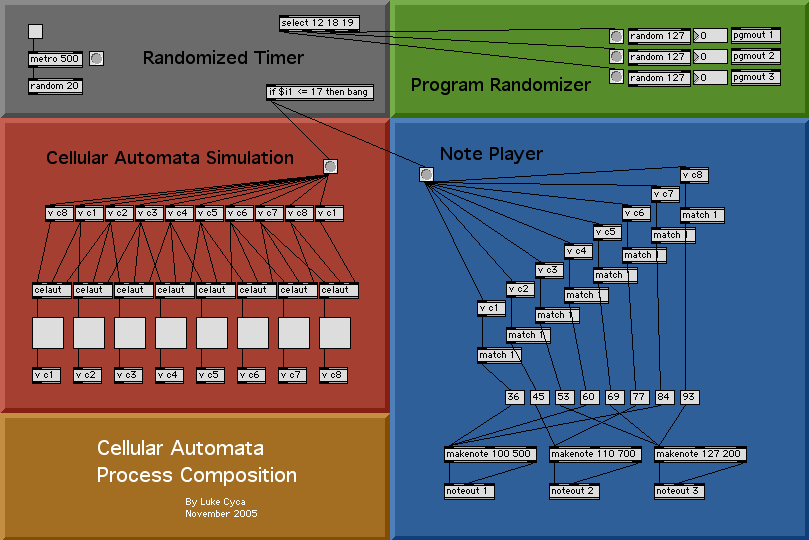Cellular Automata Composition
Cellular Automata is a discreet mathematic model related to fractals. I've chosen to use a one-dimensional cellular automata simulator as the basis for a process composition using Max/MSP. This was originally an assignment for an electroacoustic music course instructed by Arne Eigenfeldt at SFU.
Download
Cellular_Automata_Composition.zip
How to use it
- Make sure the midi objects are configured to play through quicktime or another instrument
- Turn on the metro object in the gray panel
- Start the simulation by clicking one of the large checkboxes in the red panel which represent cells
- As the simulation continues, you can continue to interact with it by turning cells on or off manually.
How it works
At every time step, each cell takes on a new value based on the values that it and its two neighbours had at the previous time step. The value is determined by the "celaut" object which I also created. This particular version of celaut uses the standard "Rule 150" of cellular automata.
Each cell is mapped to a midi note which are divided among three channels. The programs of each of these channels change periodically to a new random value.

More info
More information about the theory of cellular automata is at:
http://en.wikipedia.org/wiki/Cellular_autonoma
Another example of its use in music is at:
http://www-128.ibm.com/developerworks/java/library/j-camusic/